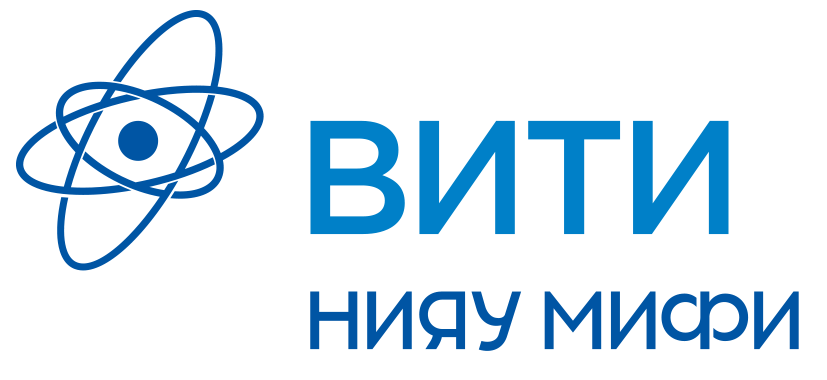Правила для авторов
(!) Обращаем внимание авторов: с 31 мая 2023 г. обновлены требования к оформлению статей с целью расширения международной аудитории журнала.
Полный текст статьи для опубликования должен быть оригинальным – не более 20% заимствований, сопровождаться экспертным заключением о возможности опубликования в открытой печати, соответствовать приведенным ниже правилам оформления.
В одном файле помещается одна статья, частями которой являются:
- индекс УДК;
- название на русском и английском языках;
- инициалы и фамилия авторов на русском и английском языках;
- аффилиация для каждого автора на русском и английском языках;
- структурированная по IMRAD аннотация (200-250 слов) на русском и английском языках;
- ключевые слова (не менее 10-и речевых единиц) на русском и английском языках;
- текст статьи;
- объединенный Список литературы / References (см. пример оформления);
- сведения об авторах (для каждого автора – Фамилия Имя Отчество, место/а работы, должность/и, ученая степень, звание, электронный адрес, индекс ORCID (http://orcid.org), телефон контактного автора) на русском и английском языках.
Статья должна быть структурирована: введение (актуальность темы; обзор проблемы; цель работы); методология (теория вопроса; подробное изложение методики проведения опытов; описание материалов и методов анализа; статистическая обработка); результаты и их обсуждение; заключение (выводы). Цель и ключевые результаты работы должны быть понятно представлены в аннотации и тексте статьи, научная новизна работы обоснована во введении со ссылкой на источники, опубликованные в научных рецензируемых изданиях (в том числе зарубежных) последних нескольких лет. Для статей производственного характера достаточно описать цель работы и полученные результаты.
Для записи формул рекомендуется применять редактор Equation 3.0. Все формулы выравниваются по центру страницы, нумеруются в круглых скобках по правому краю и упоминаться в тексте статьи непосредственно перед самими формулами.
Включение таблиц в статью должно быть целесообразным, сопровождаться нумерацией, заголовками на русском и английском языках (10 пт) и ссылками в тексте непосредственно перед самими таблицами.
Рисунки должны быть понятными при черно-белой печати, с нумерацией, подписями на русском и английском языках (10 пт), иметь ссылки в тексте и сопровождаться обоснованиями и выводами.
Статья оформляется в Microsoft Offiсe 97-2003 Word 7.0 через 1 интервал, шрифтом Times New Roman, размером 12 пт, без знаков принудительного переноса и дополнительных пробелов. Поля со всех сторон – 2 см. Желательный объем статьи – не более 15 страниц машинописного текста, включая таблицы и рисунки (не более 10-и), список литературы (количество источников определяется автором исходя из поставленной научно-исследовательской цели). Если в тексте менее 2500 знаков, статья может быть отклонена экспертами.
С целью повышения качества и объективности публикаций авторы призваны отражать в статьях передовой научный опыт России, стран СНГ и дальнего зарубежья по рассматриваемой проблематике. Объединенный список литературы / References приводится в конце статьи в порядке упоминания в тексте и оформляется в стиле Vancouver, но без сокращения названий журналов. Ссылки на иностранные источники даются на языке оригинала.
Не включаются в список литературы источники, которые никогда не будут проиндексированы в базах данных цитирования: ГОСТы, нормативные и законодательные акты, внутренние документы предприятий (доклады, отчеты, протоколы и т.д.), официальные сайты организаций, словари, справочники, учебники и т.д. Такие источники цитируются непосредственно в тексте или в постраничных сносках согласно ГОСТ Р 7.0.5-2008 https://protect.gost.ru/document.aspx?control=7&id=173511 с указанием выходных данных и URL, по которым их можно найти в Интеренете. Доклады конференций могут быть включены в список литературы, если они доступны в Интернете, при этом указывается URL и дата обращения.
Для соблюдения правил слепого рецензирования необходимо создать копию файла со статьей, удалить персональные данные, содержащиеся в тексте файла и его свойствах (в тексте статьи удалить имена авторов и наименования их мест работы, ссылки на работы авторов в списке литературы заменить на «Автор, год», информацию об авторах следует удалить из свойств документа), сохранить в формате pdf с названием «На рецензирование_Название/начало названия статьи…».
Для принятия статьи в номер журнала необходимо загрузить файл со статьей в формате Word на платформе elpub – https://glonucsec.elpub.ru/jour/index – и предоставить следующие материалы по электронной почте oni-viti@mephi.ru:
- согласие на обработку персональных данных;
- файл со статьей в формате Word;
- итоговый (после доработки) файл в формате pdf с подписью авторов;
- файл со статьей в формате pdf для слепого рецензирования;
- экспертное заключение о возможности опубликования в открытой печати.
ПРИМЕРЫ ОФОРМЛЕНИЯ СПИСКА ЛИТЕРАТУРЫ / REFERENCES
1. Киркин А.М., Курындин А.В., Синегрибов С.В. и др. Проблема моделирования геометрии крестообразных витых твэлов при проведении теплогидравлических расчетов. Глобальная ядерная безопасность. 2023;13(1):23–35. https://doi.org/10.26583/gns-2023-01-03
2. Kulamer B., Meester W., Salk Ju., Recommended Practices to Ensure Technical Conference Content Quality. Science Editor and Publisher. 2017;2(1):47–51. https://doi.org/10.24069/2542-0267-2017-1-1-12
3. Stevens M.R., Park K., Tian G. et ol. Why Do Some Articles in Planning Journals Get
Cited More than Others? Journal of Planning Education and Research. 2022;42(3):442–463. https://doi.org/10.1177/0739456X19827083
4. Small H., Boyack K. W., Klavans R. Citations and certainty: a new interpretation of citation counts.
Scientometrics. 2019;118(2):1079–1092. https://doi.org/10.1007/s11192-019-03016-z
5. Barie E. Z., Chang C. Application of variable frequency drive on the condensate pump motors of APR1400 nuclear power plants for energy savings. Journal of International Council on Electrical Engineering. 2018;8(1):179–189. https://doi.org/10.1080/22348972.2018.1515691
6. Рашитов П.А., Серегин Д.А., Аникин М.Д., Вершанский Е.А. Применение многоуровневых инверторов напряжения в распределенных устройствах продольной компенсации. Вестник МЭИ. 2021;3:58–66. https://doi.org/10.24160/1993-6982-2021-3-58-66
7. Пономаренко Г.Л., Румик А.П. Патент № 2675380 C1 Российская Федерация, МПК G21C 7/00. Способ маневрирования мощностью ядерного энергетического реактора типа ВВЭР и PWR. Заявка №2018117898 от 15.05.2018; опубл. 19.12.2018. URL: https://rusneb.ru/catalog/000224_000128_0002675380_20181219_C1_RU/ (дата обращения: 26.03.2023).
8. Алвахеба А. И., Сурин В.И., Бекетов В.Г., Иванов О.В., Иванова Т.Е. Сравнительный анализ результатов радиографического и электрофизического неразрушающего контроля сварных соединений модельных образцов. В кн.: Системы проектирования, технологической подготовки производства и управления этапами жизненного цикла промышленного продукта (CAD/CAM/PDM–2018): Труды XVIII Международной молодежной конференции. Москва: Институт проблем управления им. В.А. Трапезникова РАН; 2018. С. 179-180. URL: https://www.elibrary.ru/download/elibrary_36979736_11029641.pdf (дата обращения: 06.03.2023). EDN: YXJYAH
9. Vrbanic I., Samanta Р., Basic I. Risk importance measures in the design and operation of nuclear power plants. ASME Press; 2017. 141 p. https://doi.org/10.1115/1.861394
10. Surin V.I., Beketov V.G., Abu Ghazal A.A., Alwaheba A.I. Spectral analysis method of electrophysical non-destructive testing data. Journal of Physics: Conference Series. Mathematical modeling and computational methods in problems of electromagnetism, electronics and physics of welding. 2021;(2131):052061. https://doi.org/10.1088/1742-6596/2131/5/052061
NOTES FOR AUTHORS
(!) Please, pay attention: the article formatting requirements have been updated in order to expand the international readership of the journal since May, 31st 2023.
The full text of the article to be published must be original - no more than 20% borrowings, it must be accompanied by an expert resolution on publication possibility in the open press, and it must comply with the following rules.
One file consists of one paper which has the following:
- UDC index;
- the title in Russian and English;
- authors' initials and surnames in Russian and English;
- an affiliation in Russian and English for each author;
- the structured abstract (200-250 words) in Russian and English according to IMRAD;
- keywords in Russian and English (not less than 10 speech units);
- article text;
- Combined List of References / References (see example design);
- information about the authors in Russian and English (each author should provide a full name, a place of work, position/s, an academic degree, a rank, e-mail address, ORCID index (http://orcid.org), contact phone number).
The article should be structured: introduction (relevance of the topic; review of the problem; purpose of the work); methodology (issue theory; detailed description of experiment methodology; description of materials and methods of analysis; statistical processing); results and their discussion; conclusions. The objective and key results of the work should be clearly presented in the abstract and the text of the article, the scientific novelty of the work is justified in the introduction with reference to the sources published in scientific peer-reviewed publications (including foreign ones) in the last few years. It is enough to describe the objective of the work and the results obtained for articles of a production nature.
The Equation 3.0 editor is recommended when writing formulas. All formulas are aligned to the center of the page, numbered in parentheses on the right and referred to in the text of the article just ahead of the formulas.
Inclusion of tables in the article should be appropriate, they should be numbered and have headings in Russian and English (10 pf) and links in the text just ahead of the tables.
Figures should be clear when printing in black and white, numbered, figure captions in Russian and English (10 pf), have links in the text and be accompanied by justifications and conclusions.
An article should be processed in the Microsoft Office 97-2003 Word 7.0 format, 12 point font Times New Roman; print – 1 interval. Without any signs of forced transfer and additional gaps. Page parameters: all sides are 2,5 cm. The volume of article is no more than 15 pages of the typewritten text, including tables, drawings (no more than 10) and the list of references (the number of sources is determined by the author on the basis of the research objective). If the text of the article is less than 2500 type characters, the article may be rejected by experts.
In order to improve the quality and objectivity of publications, the authors are intended to reflect the advanced scientific experience of Russia, the CIS and foreign countries on the subject matter in the articles. The combined List of References is given at the end of the article in the order of mention in the text, in Vancouver style, but without abbreviating the names of the journals. References to foreign sources should be given in their original language.
Sources that will never be indexed in citation databases are not included in the reference list: State Standards, normative and legislative acts, internal documents of companies (reports, protocols, etc.), official websites of organisations, dictionaries, reference books, textbooks, etc. Such sources are cited directly in the text or in page footnotes according to State Standard R 7.0.5-2008 (https://protect.gost.ru/document.aspx?control=7&id=173511) with indication of output data and URL where they can be found on the Internet. Conference papers may be included in the list of references if they are available on the Internet, indicating the URL and the date of reference.
To comply with the rules of blind peer review, a copy of the file with the article should be created, personal data contained in the text of the file and its properties should be deleted (authors' names and the names of their places of work in the text of the article should be deleted, references to authors' works in the list of references should be replaced by "Author, year", information about authors should be removed from the document properties), saved in pdf format with the title "To review_Title/start title of article...".
To be accepted into the journal issue, the article must be uploaded as a Word file on the elpub platform - https://glonucsec.elpub.ru/jour/index - and the following materials must be sent by email oni-viti@mephi.ru:
- consent to personal data processing;
- an article file in Word format;
- final (after revision) pdf file signed by the authors;
- a pdf file of the article for blind peer review;
- an expert analysis of publication possibility in the open press.
THE LIST OF REFERENCES STANDARD
1. Kirkin A.M., Kuryndin A.V., Sinegribov S.V. [et al.] The problem of modeling the geometry of Twisted Fuel Rods with X-type cross section in the performance of thermohydraulic calculations. Global Nuclear Safety. 2023;13(1):23–35. (In Russ.) https://doi.org/10.26583/gns-2023-01-03
2. Kulamer B., Meester W., Salk Ju., Recommended Practices to Ensure Technical Conference Content Quality. Science Editor and Publisher. 2017;2(1):47–51. https://doi.org/10.24069/2542-0267-2017-1-1-12
3. Stevens M.R., Park K., Tian G. et ol. Why Do Some Articles in Planning Journals Get
Cited More than Others? Journal of Planning Education and Research. 2022;42(3):442–463. https://doi.org/10.1177/0739456X19827083
4. Small H., Boyack K. W., Klavans R. Citations and certainty: a new interpretation of citation counts.
Scientometrics. 2019;118(2):1079–1092. https://doi.org/10.1007/s11192-019-03016-z
5. Barie E. Z., Chang C. Application of variable frequency drive on the condensate pump motors of APR1400 nuclear power plants for energy savings. Journal of International Council on Electrical Engineering. 2018;8(1):179–189. https://doi.org/10.1080/22348972.2018.1515691
6. Rashitov P.A., Seregin D.A., Anikin M.D., Vershanskiy E.A. Application of multilevel voltage inverters in distributed series compensation devices. Вulletin MPEI. 2021;3:58–66 (In Russ.) https://doi.org/10.24160/1993-6982-2021-3-58-66
7. Surin V.I., Beketov V.G., Abu Ghazal A.A., Alwaheba A.I. Spectral analysis method of electrophysical non-destructive testing data. Journal of Physics: Conference Series. Mathematical modeling and computational methods in problems of electromagnetism, electronics and physics of welding. 2021;(2131):052061. https://doi.org/10.1088/1742-6596/2131/5/052061
8. Erd A., Stokłosa J. Main design guidelines for battery management systems for traction purposes. Proceedings of the XI International Scientific and Technical Conference Automotive Safety. 2018. Slovakia. https://doi.org/10.1109/AUTOSAFE.2018.8373345
9. Chernov E.V. Development and application of WWER1000 PC based simulators for education and training in NRNU MEphI. Developing a systematic education and training approach using personal computer based simulators for nuclear power programmes proceedings of a technical meeting. Vienna. 15–19 May. 2017:96–98. URL: https://www-pub.iaea.org/MTCD/Publications/PDF/TE1836web.pdf. (accessed: 10.05.2023).
10. Golyandina N., Zhigljavsky A. Singular spectrum analysis for time series. SpringerBriefs in Statistics. Berlin, Heidelberg: Springer Berlin / Heidelberg; 2020. ISBN 978-3-662-62435-7. URL: https://link.springer.com/book/10.1007/978-3-662-62436-4 (accessed: 19.05.2023).
 Министерство просвещения
Министерство просвещения
 Министерство науки и высшего образования РФ
Министерство науки и высшего образования РФ
 Ситуационный центр Минобрнауки России
Ситуационный центр Минобрнауки России
 Наука и образование против террора
Наука и образование против террора
 Противодействие коррупции
Противодействие коррупции
 Социальный навигатор
Социальный навигатор
 Отраслевой карьерный портал Росатома
Отраслевой карьерный портал Росатома
 Тревожная кнопка
Тревожная кнопка
 Политика НИЯУ МИФИ в отношении обработки персональных данных
Политика НИЯУ МИФИ в отношении обработки персональных данных








